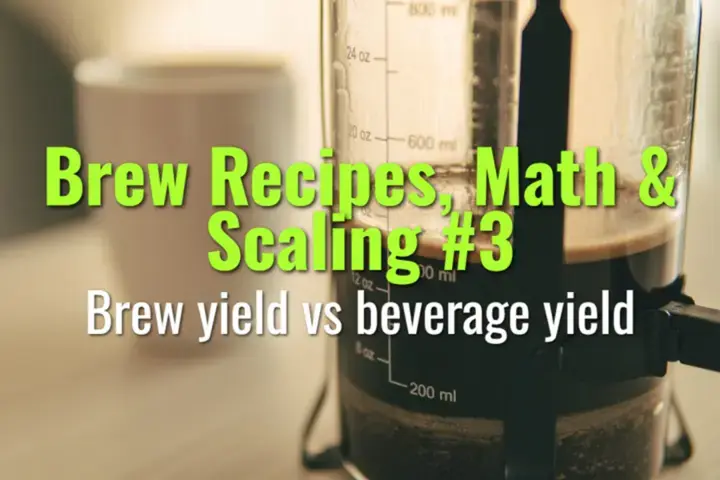Brew yield vs beverage yield
The distinction between brew yield and beverage yield, and why both matter for accurate recipe design and sensory results.
- Coffee Basics Nerds
- 1 min read
Article 3 of 12 in Brew Recipes, Math & Scaling/

Brew Yield
- Definition: The total liquid mass collected in the server after brewing.
- Includes both beverage and absorbed water losses.
- Formula: Brew Yield = Dose × (1 + Extraction Yield/100).
- Important for calculating extraction yield (EY) when using refractometer data.
Beverage Yield
- Definition: The actual drinkable portion of coffee served in the cup.
- Excludes losses from:
- Water absorbed by grounds.
- Retention in filters or equipment.
- Spillage or evaporation.
- This is what the consumer experiences as the final beverage volume.
Why the Difference Matters
- Barista Perspective: Beverage yield determines serving size and customer experience.
- Scientific Perspective: Brew yield is needed for accurate EY calculations.
- Confusing the two can lead to wrong interpretations of strength, EY, and recipe performance.
Example
- Dose: 20 g coffee.
- Water in: 300 g.
- Brew yield (server): 280 g (some absorbed by grounds).
- Beverage yield (cup): 265 g (after retention in filter).
- Difference: 15 g → critical for precision.
Practical Tips
- Always weigh beverage yield when dialing in recipes.
- Use brew yield when calculating EY from TDS readings.
- Record both in logs for full traceability.
Summary
Brew yield = total liquid collected. Beverage yield = what ends up in the cup. Knowing both ensures accurate calculations, consistent recipes, and alignment between scientific measurement and customer-facing service.